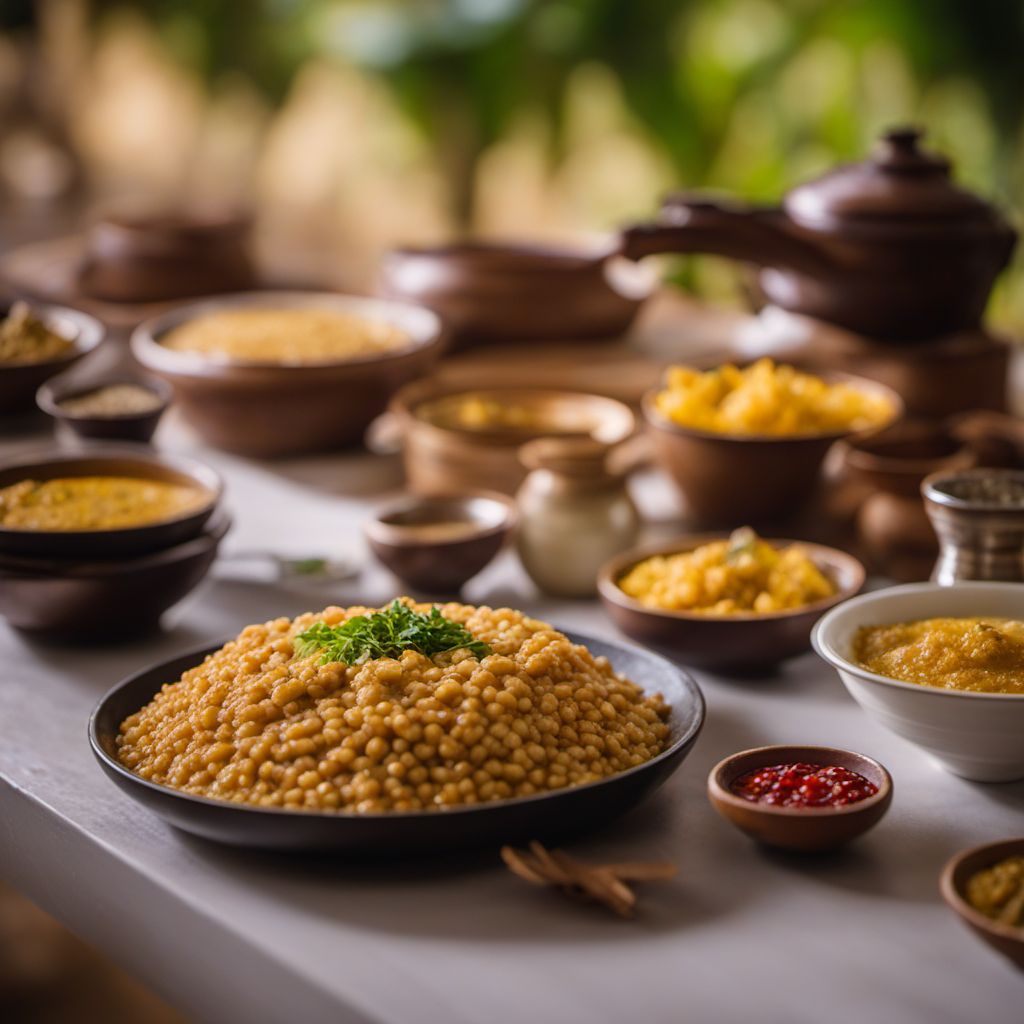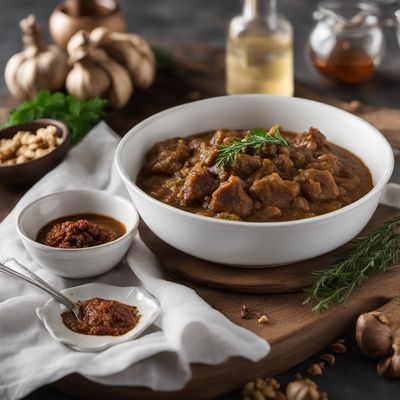
Dish
Bazin
Bazin is a simple and hearty dish that is perfect for a cold winter day. The sorghum flour gives it a slightly nutty flavor, while the stew adds a spicy and savory kick. Bazin is often eaten with the hands, and is a great way to bring people together around the dinner table.
Origins and history
Bazin has been a staple of Chadian cuisine for centuries. It is believed to have originated with the Kanembu people, who used to make a similar dish with millet flour. The dish has evolved over time, and is now a popular comfort food in the region. Bazin is often eaten with family and friends, and is a symbol of hospitality and community.
Dietary considerations
Bazin is suitable for vegetarians and vegans, as it is made with only plant-based ingredients. It is also gluten-free, as it is made with sorghum flour.
Variations
Bazin can be made with a variety of stews, including meat, fish, or vegetable-based options. Some recipes also call for the addition of spices like cumin or coriander, to give the dish an extra flavor boost.
Presentation and garnishing
Bazin is typically served in a large communal bowl, with the stew in the center and the porridge surrounding it. It can be garnished with fresh herbs or chopped onions, and is often eaten with the hands.
Tips & Tricks
Bazin can be a bit tricky to make, as the sorghum flour can be difficult to work with. Be sure to follow the recipe carefully, and don't be afraid to ask for help if you need it. It is also important to cook the stew for the correct amount of time, to ensure that the flavors are fully developed.
Side-dishes
Bazin is typically served with a spicy meat or vegetable stew. It can also be topped with a variety of condiments, including hot sauce, chopped onions, or fresh herbs like parsley or cilantro.
Drink pairings
Bazin pairs well with a variety of drinks, including tea, coffee, or a cold glass of water. It is also a great dish to serve with a fruity or spicy cocktail, to complement the flavors of the stew.
Delicious Bazin recipes
More dishes from this category... Browse all »

Acorn Bread
Native American cuisine

Alkubus
Moroccan cuisine

Almojábana
Colombian cuisine

Anadama Bread
American cuisine

Antiguan Butter Bread
Antiguan cuisine

Baati
Indian cuisine

Babà rustico
Italian cuisine

Baguette
French cuisine
More cuisines from this region... Browse all »

Algerian cuisine
Spicy, Savory, Rich, Bold, Aromatic

Berber cuisine
Spicy, Savory, Aromatic, Bold, Earthy

Egyptian cuisine
Spicy, Savory, Aromatic, Bold, Earthy

Libyan cuisine
Spicy, Savory, Aromatic, Bold, Earthy

Mauritanian cuisine
Spicy, Savory, Aromatic, Bold, Earthy

Moroccan cuisine
Spicy, Sweet, Savory

Tunisian cuisine
Spicy, Flavorful, Aromatic, Bold

Western Saharan cuisine
Spicy, Flavorful, Hearty, Aromatic

